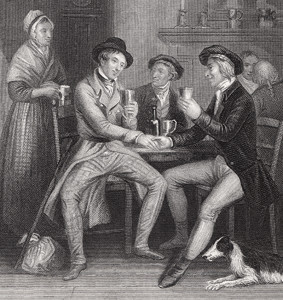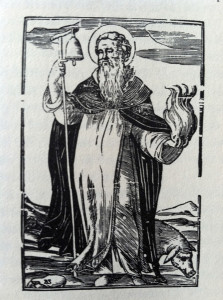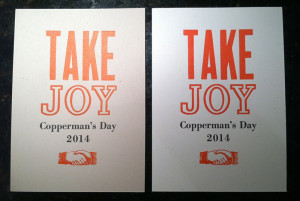January’s perhaps the most important month of them all in Scotland, for it holds what may be the country’s two most important celebrations: New Year’s Day at the start, and at the close, Burns’ Night.
Each 25th of January we celebrate the birth of the great Scottish poet Robert Burns. Burns’ Night suppers are held throughout Scotland, and the meals typically include Scottish dishes like haggis served with neeps and tatties (turnips and potatoes), together with a wee dram of whisky accompanied by the recitation of plenty of Burns’ poetry. A good place to begin is with the “Selkirk Grace,” an old suppertime grace that Mr. Burns made a bit more Scottish through the addition of the Scots dialect.
Some hae meat and canna eat,
And some wad eat that want it;
But we hae meat, and we can eat,
Sae let the Lord be thankit.
It may take some time for a non-Highlander to become accustomed to the dialect of Robert Burns’ poems, but it comes with practice (and perhaps an additional wee dram of whisky). It also helps to know someone Scottish. I worked for a long time with a woman from Scotland and to hear Josephine read an instruction manual was not far from hearing someone recite a Burns poem. Anytime I read Burns I just imagine it is Josephine who is speaking to me again, and then it is easy to fall into the rhythm of his words.
Certainly the night calls for the singing of Burns’ most famous work, the song and poem “Auld Lang Syne,” which translates to Old Long Since, or Old Times.
Should auld acquaintance be forgot,
and never brought to mind?
Should auld acquaintance be forgot,
and auld lang syne?
- CHORUS:
- For auld lang syne, my jo,
for auld lang syne,
we’ll tak a cup o’ kindness yet,
for auld lang syne.
And surely ye’ll be your pint-stowp!
and surely I’ll be mine!
And we’ll tak a cup o’ kindness yet,
for auld lang syne.
- CHORUS
We twa hae run about the braes,
and pu’d the gowans fine;
But we’ve wander’d mony a weary fit,
sin auld lang syne.
- CHORUS
We twa hae paidl’d i’ the burn,
frae morning sun till dine;
But seas between us braid hae roar’d
sin auld lang syne.
- CHORUS
And there’s a hand, my trusty fiere!
and gie’s a hand o’ thine!
And we’ll tak a right gude-willy waught,
for auld lang syne.
- CHORUS
And so we look back on old times, and there’s nothing wrong with doing that every now and again. A night like Burns’ Night seems appropriate enough for some sentimental reminiscing and a bit of whisky and an old song with friends. If it brings a tear or two, so be it.


